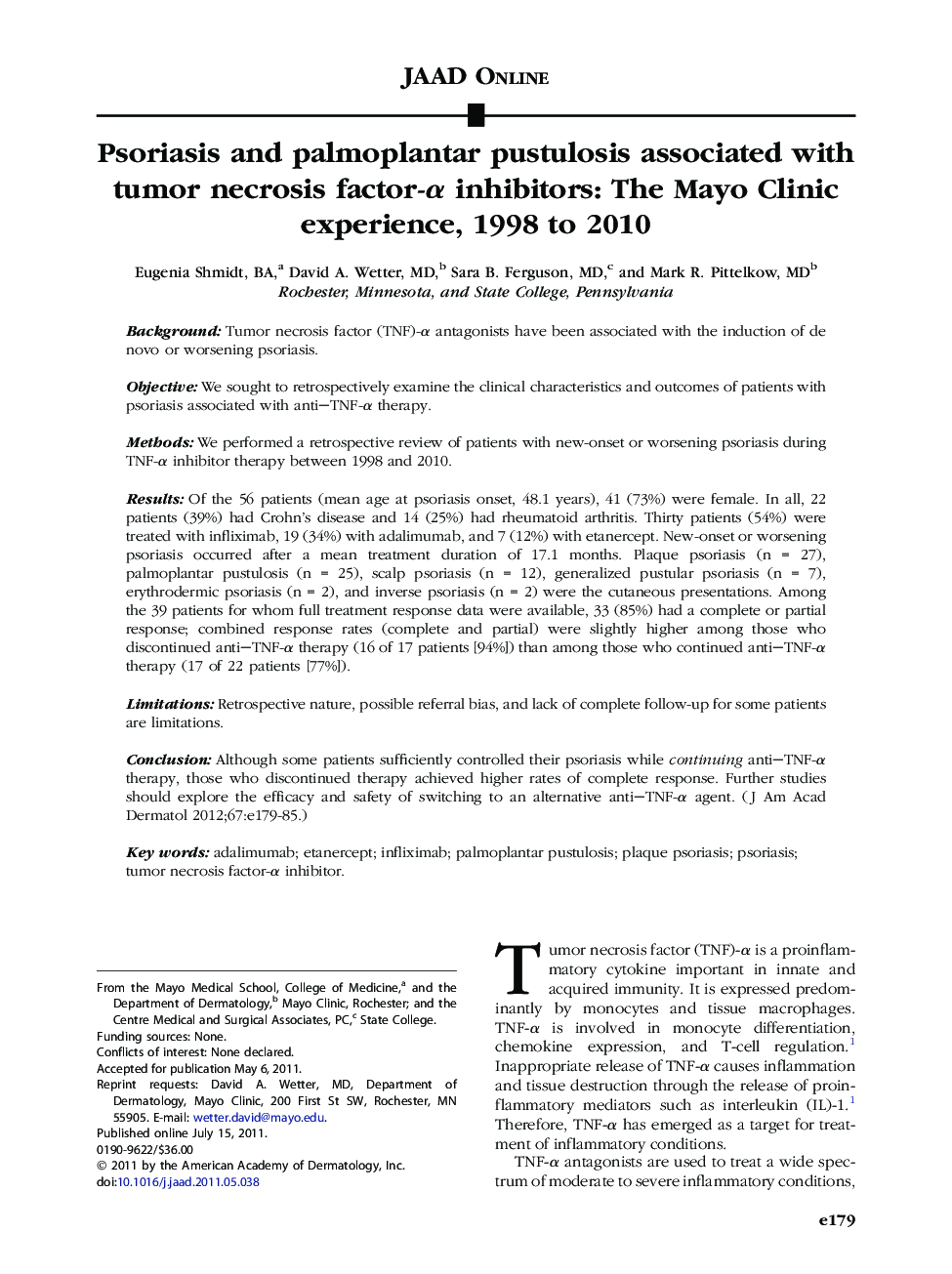| کد مقاله | کد نشریه | سال انتشار | مقاله انگلیسی | نسخه تمام متن |
|---|---|---|---|---|
| 3205957 | 1587559 | 2012 | 7 صفحه PDF | دانلود رایگان |

BackgroundTumor necrosis factor (TNF)-α antagonists have been associated with the induction of de novo or worsening psoriasis.ObjectiveWe sought to retrospectively examine the clinical characteristics and outcomes of patients with psoriasis associated with anti–TNF-α therapy.MethodsWe performed a retrospective review of patients with new-onset or worsening psoriasis during TNF-α inhibitor therapy between 1998 and 2010.ResultsOf the 56 patients (mean age at psoriasis onset, 48.1 years), 41 (73%) were female. In all, 22 patients (39%) had Crohn’s disease and 14 (25%) had rheumatoid arthritis. Thirty patients (54%) were treated with infliximab, 19 (34%) with adalimumab, and 7 (12%) with etanercept. New-onset or worsening psoriasis occurred after a mean treatment duration of 17.1 months. Plaque psoriasis (n = 27), palmoplantar pustulosis (n = 25), scalp psoriasis (n = 12), generalized pustular psoriasis (n = 7), erythrodermic psoriasis (n = 2), and inverse psoriasis (n = 2) were the cutaneous presentations. Among the 39 patients for whom full treatment response data were available, 33 (85%) had a complete or partial response; combined response rates (complete and partial) were slightly higher among those who discontinued anti–TNF-α therapy (16 of 17 patients [94%]) than among those who continued anti–TNF-α therapy (17 of 22 patients [77%]).LimitationsRetrospective nature, possible referral bias, and lack of complete follow-up for some patients are limitations.ConclusionAlthough some patients sufficiently controlled their psoriasis while continuing anti–TNF-α therapy, those who discontinued therapy achieved higher rates of complete response. Further studies should explore the efficacy and safety of switching to an alternative anti–TNF-α agent.
Journal: Journal of the American Academy of Dermatology - Volume 67, Issue 5, November 2012, Pages e179–e185